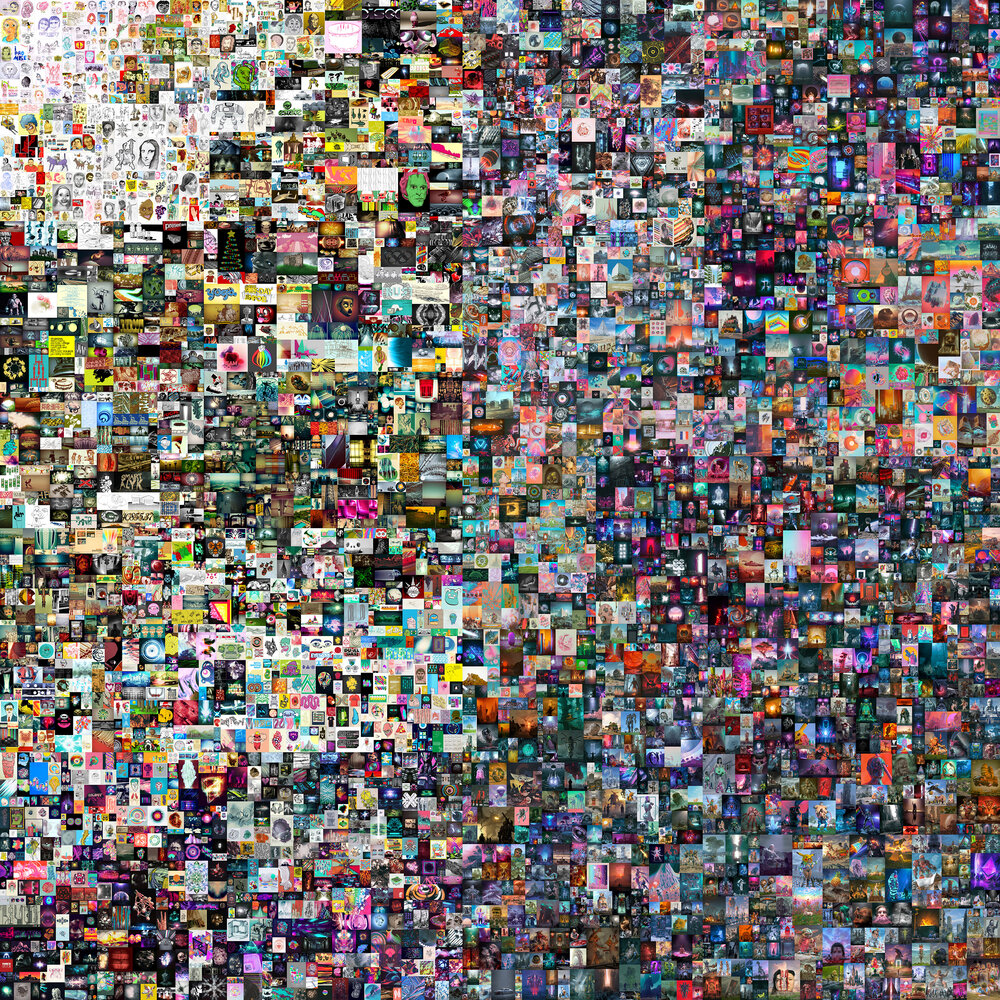Written by: Adam J. Packer, CFA®, Caia®
With increasing frequency, blockchain and cryptocurrencies are becoming topics of interest among our clients and colleagues. While most sophisticated investors know well enough to steer clear of dogecoin, other blockchain-backed assets have more rational appeal. Bitcoin, as one of the most tenured blockchain assets (having launched in January 2009), understandably garners the most attention. With the recent Initial Public Offering of Coinbase (the largest U.S-based cryptocurrency exchange), the public’s interest in bitcoin, and digital currencies in general, has never been higher.
But I’d like to address one asset category that may have the most staying power – NFTs (Non-Fungible Tokens).
NFTs are digital tokens that record immutable ownership of an asset, most commonly virtual pieces of art, collectibles, videos, and music. Because no two NFTs are alike, they are “non-fungible.” A fungible good, in comparison, is an item that is freely exchangeable with an item of equal or like kind. For example, a $1 bill can be substituted with four quarters or ten dimes. A Non-fungible asset cannot be exchanged or replaced for another because it has an irreplicable quality. Applying NFTs to an asset class like art & collectibles thus seems like a natural fit as both extract value out of rarity and authenticity. Just last week renowned digital artist Beeple sold a NFT-based artwork for an eye-popping $69 million at Christie’s. Professional sports are also getting into the game; the NBA is now licensing video highlights and digital artwork via Top Shots, a platform that has already generated more than $230 million in sales since launch.

Beeple’s collage, Everydays: The First 5000 Days, sold at Christie’s. Image: Beeple
NFTs also function as digital certificates of authenticity (COAs), even for physical, non-digital assets. In the art world, COAs are paramount because they help verify a work’s origins and ownership history (a.k.a. provenance). A piece that can be verifiably attributed to the original artist is more valuable because it’s less likely a forgery. With NFTs, the COA is stored as a “smart contract” and immutably recorded on the blockchain, providing irreversible proof of ownership. Similar to traditional COAs, NFTs can be created so that the “contract” records key information including the purchase date, the artist’s name, and his/her unique digital signature. Other information, such as the work’s title and medium, an image of the physical work, as well as the year and location of production, can be “tokenized” on the secure blockchain.
Yet, this is not new! Artists have been certifying their works via blockchain since 2015. And there is a mutually beneficial reason to do so. Buyers of NFTs have confidence that their purchase is authentic, while artists can track and monetize their intellectual property, earning royalties whenever an NFT-backed work is resold. There is also an emerging space seeking to democratize art & collectibles via fractional ownership (a.k.a. Fractional Non-Fungible Tokens, or F-NFTs). These F-NFTs would allow previously priced out investors to own a “piece” of highly valued artwork, potentially creating a new, and vast, market of buyers.
Cryptocurrencies carry substantial political and idiosyncratic risk, making them highly volatile and difficult to implement in a long-term strategic portfolio. While NFTs may not be suitable within a traditional investment portfolio either, their application within the art & collectibles market makes it worthy of discussion and analysis. If you’re looking to beat the stock market, the long-term returns of art & collectibles leave a lot to be desired, but there are certainly diversifications benefits given the asset class’ low correlation to stocks and bonds. Also, despite low single-digit returns, art & collectibles, as a whole, have historically been a good store of value on an inflation-adjusted basis.[i] The verdict is still out on the long-term value of CryptoKitties, but maybe they’re this generation’s Beanie Babies.
Ultra-high-net-worth investors own roughly $1.74 trillion in art & collectibles, a figure that could surpass $2 trillion by 2023.[ii] While various cryptocurrencies certainly will not exist in ten years, let alone a few years, NFTs have strong staying power potential given their value proposition for both buyers and sellers in an enormous target market. And let’s not forget NFTs may have far reaching application beyond art & collectibles. Tokenizing a deed to a house? What about patents? While we may not be close to documenting home ownership via NFTs, future capabilities are already in the works. Stay tuned!
Related: NFTs: Part of This Decade’s Investment Megatrend?
[i] Art as an investment: Why should art be considered as an asset class?, Adriano Picinati di Torcello, Deloitte Luxembourg.
[ii] Art & Finance Report 2019, 6th Edition, Deloitte Luxembourg and ArtTactic.


